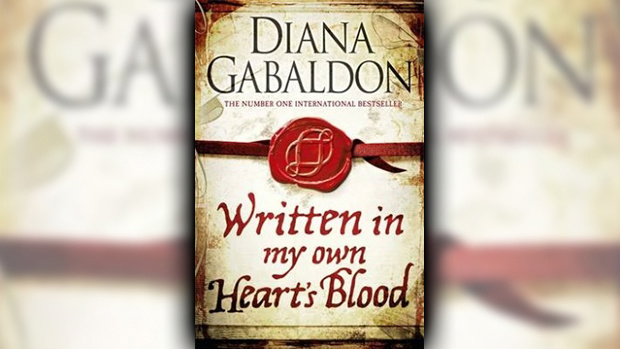Stephanie Jones: Book Review - Written in My Own Heart's Blood by Diana Gabaldon
- Publish Date
- Friday, 20 June 2014, 12:00AM

- Author
- By Stephanie Jones
The American Revolution, time travel and shocking paternity revelations? Welcome to Written in My Own Heart’s Blood, and find a comfy chair because you’ll be here a while. Four years in the writing, the eighth ‘Big Book’ (as the author affectionately terms her larger works) in the Outlander series clocks in at more than 800 pages and once again showcases Diana Gabaldon’s gift for century-spanning storytelling that is surprisingly streamlined for all that it encompasses.
This is intelligent historical fiction (with touches of romance) that reflects Gabaldon’s exceptional erudition, which encompasses training in zoology, marine biology, computational science and much else. Heart’s Blood picks up where An Echo in the Bone left off, at the dawn of the American Revolution and with the discovery by a horrified William, the step-son of Lord John Grey, that all this time Jamie Fraser, the Rebel and Scottish Highlander, was his biological father and no one told him.
The travails of William, in particular his pining for a fetching prostitute, are prominent, along with those of Jamie and his beloved wife Claire, an ex-World War combat nurse turned Revolutionary-era physician; Lord John, in a sticky position as a visible Loyalist and the husband of Claire, whom he convinced to marry him for protection in Jamie’s absence; Jamie’s nephew Ian Murray, who wants to wed a Quaker but is inconveniently not one himself; and Jamie and Claire’s daughter Brianna, who is having trouble keeping her small family unit all in the same century.
Gabaldon has said the series – which is complemented by a host of shorter novels on other themes – eludes genre categorization, but for the purposes of review I am inclined to define it as historical adventure. It has interludes of powerful action and drama, most effectively when Claire is grappling with medical crises – her own and others’ – and maintains considerable familial intimacy within its sprawling scope. Amid several intriguing duos is the most compelling relationship, that of Jamie and Claire, whose love remains passionate and whose separation for much of Heart’s Blood contributes to the novel’s tension, with the the tenderness and humour of their reunions balancing the story’s bloodier aspects.
Those who normally avoid fantasy should not be put off by the time-travel element; the Scottish stones that allow Jamie, Claire, Brianna and others to move back and forth in time require little suspension of disbelief.
The century-leaping conceit also contributes to the distinctive levity of Gabaldon’s voice and the preternatural wisdom of her characters, in particular Claire, who has the prescient advantage of knowing how to extract penicillin from cheese mold 150-odd years in advance, though she later remonstrates with herself for not brushing up on her American history when she had the chance; it would have been handy to know how the Revolution was going to play out.
To read Gabaldon is to not only savour a story well told but to receive an entertaining lecture in matters of history and science; no other popular writer is likely to address such diverse matters as castrametation (the science of laying out a military camp), the particular dangers that might befall the infant of a heavily drunk woman, or the Golden Hour, the period that defines a victim’s chances of surviving an injury. In Heart’s Blood, it’s all pertinent.
Take your Radio, Podcasts and Music with you

